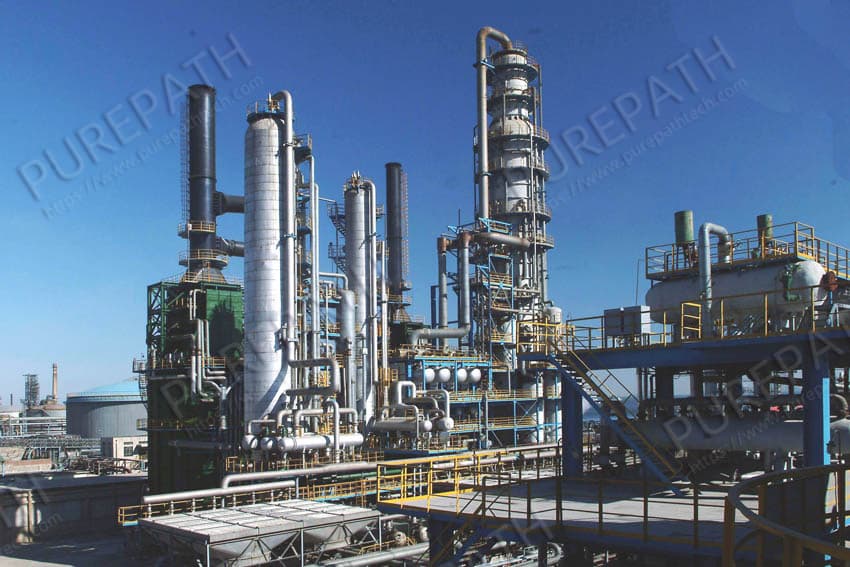But what exactly is fractional distillation, and how does it transform a black, sticky mess into the gasoline in your car or the jet fuel in an airplane? Let’s break it down.
What Is Crude Oil?
Crude oil is a complex mixture of hydrocarbons — molecules made of hydrogen and carbon — along with impurities like sulfur, nitrogen, and oxygen. These hydrocarbons range from light gases like methane to heavy, tar-like substances.
Each hydrocarbon has a different boiling point, and this is the key to how they are separated.
What Is Fractional Distillation?

Fractional distillation is a physical separation process that uses heat to separate the components of a mixture based on their boiling points. It’s commonly used in oil refineries to turn crude oil into usable products like:
- Petrol (gasoline)
- Diesel
- Kerosene
- Lubricating oil
- Bitumen
How the Process Works
Heating the Crude Oil
First, crude oil is heated in a furnace to around 350–400°C. This causes most of the hydrocarbons to vaporize, although some of the heavier components remain as a liquid.
Entering the Fractionating Column
The vaporized oil is then fed into a fractionating column — a tall, vertical tower with a temperature gradient (hot at the bottom, cooler at the top). As the vapors rise through the column, the temperature gradually decreases.
Separation by Boiling Point
Each hydrocarbon fraction condenses at a specific temperature range and collects on trays or bubble caps inside the column:
How Crude Oil Is Separated into Fractions
| Fraction | Boiling Point Range | Uses |
| Refinery gases | < 20°C | LPG, cooking gas |
| Gasoline (petrol) | 40–100°C | Car fuel |
| Naphtha | 100–160°C | Petrochemicals, plastics |
| Kerosene | 160–250°C | Jet fuel, heating oil |
| Diesel | 250–320°C | Truck fuel, generators |
| Lubricating oils | 320–400°C | Engine oil, waxes |
| Bitumen (residue) | > 400°C | Road surfacing, roofing |
Why Fractional Distillation Matters
Fractional distillation is the backbone of the modern petrochemical industry. It allows refineries to transform crude oil into the countless fuels and materials that power industries, transport goods, and support everyday life.
With increasing demand for energy and sustainable solutions, understanding the basics of this process is more relevant than ever — especially as new technologies like cracking and chemical recycling emerge to complement and evolve traditional methods.
Final Thoughts
Fractional distillation is a brilliant example of science in action — using something as simple as boiling points to unravel the complexity of crude oil. From the gas in your tank to the plastic in your phone, the journey of crude oil begins in the tall towers of a distillation column.